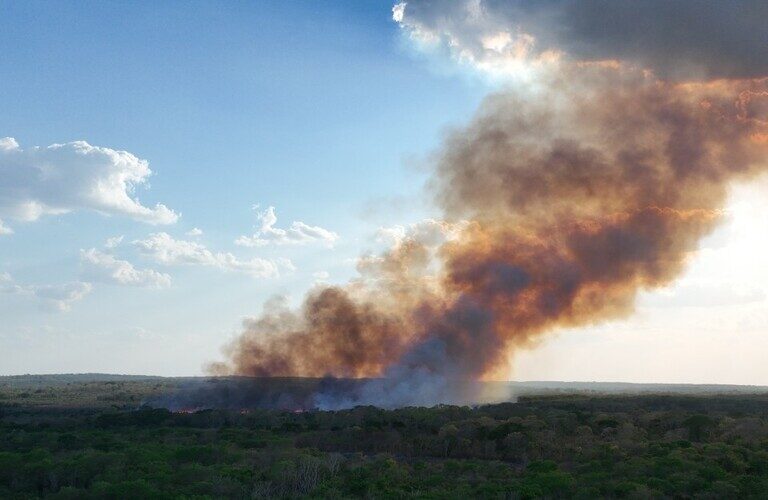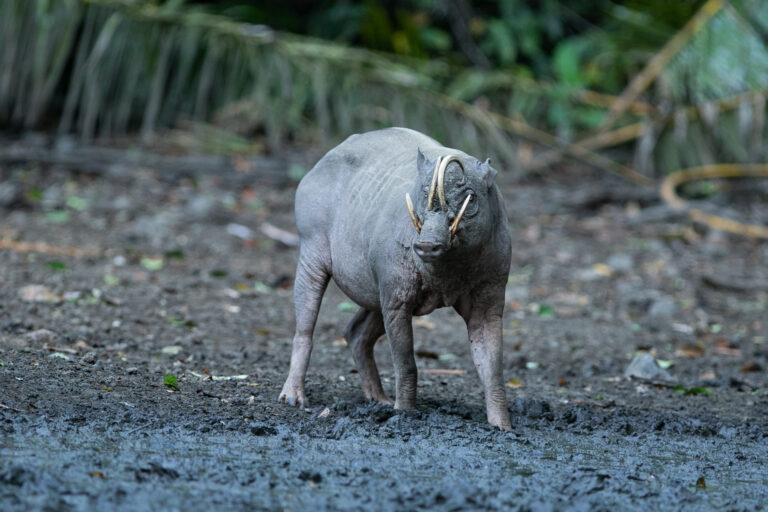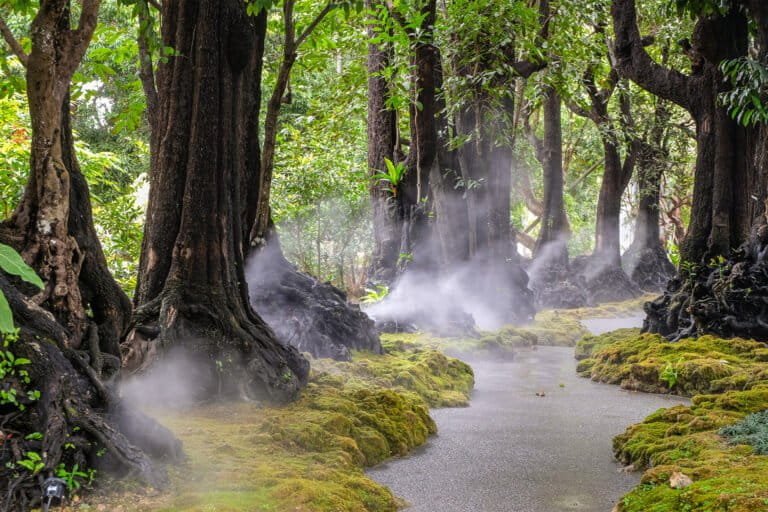- Small-scale gold mining provides more jobs than any other mining sector, yet it’s also the world’s largest source of mercury pollution, a major driver of tropical deforestation, and its informal nature breeds organized crime and corruption.
- One proposed solution to these ills is investment in centralized gold processing plants — which are already operating in nations like Peru and Tanzania — because they use less toxic techniques to extract the ore, while reducing the prevalence of criminal networks in the industry.
- The next international climate summit, COP30, which will be hosted in Brazil’s Amazon, offers a strategic opportunity to put the gold mining issue squarely on the international agenda, a new op-ed argues: “Gold’s glitter will not fade, but if mined without reform, it will continue costing the world its forests, its rivers, and its security.”
- This article is a commentary. The views expressed are those of the author, not necessarily of Mongabay.
Artisanal and small-scale gold mining employs more than 15 million people globally and generates a fifth of global gold supplies. It supports 100 million people indirectly, more than any other extractive sector, yet despite its economic lifeline status, it remains the world’s largest source of mercury pollution and a growing conduit for organized crime, corruption and environmental devastation. A host of international and regional agreements and programs have emerged to target illegal gold mining and associated issues, from the Minamata Convention on Mercury to the planetGOLD initiative.
Against this backdrop of pollution, crime and informality, one proposed solution is investment in centralized gold processing plants. A report from the World Gold Council found that if well designed and governed, such plants can help shift workers from informal to formal employment, facilitate due diligence, curb illegal mercury use, and decouple artisanal mining from criminal and illicit economies. Promising experiences in regularizing small-scale gold production from Peru to Tanzania suggest that the focus on such plants offers more than hypothetical returns.
The mercury used to amalgamate gold is cheap, effective and toxic. Studies from artisanal and small-scale mining sites across the Amazon reveal catastrophic consequences for human health and ecosystems. Investment in centralized and mercury-free processing plants could be a “missing middle” in the sector, transforming pollutant-intensive livelihoods to cleaner, safer ones. Different types of gold processing plants require different types of interventions. For example, gravimetric plants, which separate gold through density differences rather than chemical processing, require significantly less capital than cyanidation facilities.
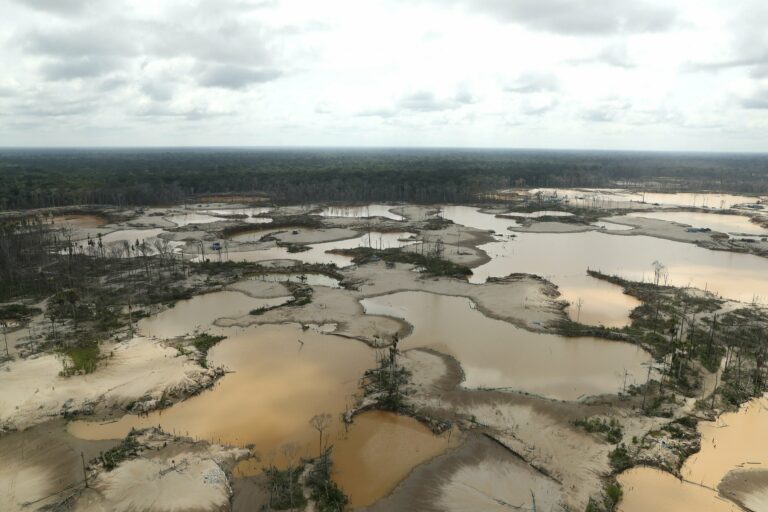
The economic logic for investing in formalized gold processing plants is compelling. The World Gold Council found that shared plants can cut mercury use by up to 95%, boost gold recovery by 40%, and create job opportunities beyond extraction. They can also facilitate traceability and tax collection. But good intentions alone are insufficient. Building and maintaining these facilities requires regulatory clarity, technical expertise and capital. That is a tall order in many of the 80 countries where artisanal and small-scale gold mining thrives, particularly in sub-Saharan Africa, Southeast Asia and Latin America.
Even so, the booming global gold market underlines the urgency of regulating illicit gold production. The price of gold has risen by more than 500% since 2008, to more than $3,300 an ounce, making it one of the world’s most sought-after commodities. The surge is driven by a mix of factors: inflation fears, high interest rates, and geopolitical instability. From the war in Ukraine and Middle East tensions, to a potential retreat of U.S. leadership, investors are rushing to gold as a hedge against volatility. The result is a steady increase in both demand and price, which in turn fuels artisanal gold mining activity, much of it informal and illegal.
Not surprisingly, the informality associated with artisanal and small-scale gold mining has made it a magnet for organized crime. Drug trafficking cartels, criminal gangs and militia are diversifying into a range of commodities, including gold. Several organized criminal networks are infiltrating gold fields in the Amazon, extorting workers in West Africa, laundering profits across Asia, and leveraging profits to expand drug trafficking and environmental crimes linked to land grabbing and deforestation. Poorly enforced regulations, porous borders, uneven police and prosecutor presence, persistent inequality and weak job prospects, and the relentless global demand for gold have deepened these entanglements.
This criminalization of gold supply chains matters not just for the rule of law but also for climate and conservation. Mining mafias destroy forests with impunity and pollute rivers with mercury and cyanide. They obstruct reforms and intimidate communities. Paradoxically, one of the very mechanisms that could disrupt illicit gold networks — processing plants — is also vulnerable to capture if not carefully designed. Larger gold refiners and purchasers also have a responsibility to leverage advances in geological research to ensure that exported gold is free of anthropogenic mercury.

The current focus of most efforts to control illegal gold in places like the Amazon and West Africa involves gold production, especially at the point of extraction. Historically, there has been less attention on regulating gold processing and sales. The decriminalization of gold supply chains could be enhanced by strengthening transparency across the entire supply chain, from permitting processes and community ownership, to oversight and compliance for sales in formal markets. A comprehensive approach is necessary to ensure processing hubs avoid becoming laundering points for illegal gold.
Scaling up gold processing plants will not be easy. According to the World Gold Council, upfront capital costs range from $200,000 for basic gravimetric models to several million dollars for full cyanidation facilities. While multilateral donors such as the GEF, UNEP, the World Bank and bilateral partners can help, the private sector is essential to mobilize operating costs and ensure sustainability, especially given development assistance shortfalls. Business models can allow for cost recovery, potentially via toll processing or shared equity structures with miners. The good news is that pilot projects in Burkina Faso and Mongolia offer early proof of concept, though few have reached scale.
Improving overall policy coherence is also crucial to encourage the use of legal processing hubs. In many parts of the world, artisanal and small-scale miners operate informally due to cumbersome permitting, limited access to land titles, and distrust of government. Mining also frequently occurs where it is ostensibly prohibited, including Indigenous lands.
Strict control and enforcement measures are of course necessary, but so are measures that incentivize legal practices, including simplified licenses, access to banking, and protection from extortion. Incentives such as price premiums for responsibly sourced gold, or tax breaks for compliant facilities, can nudge behavior in the right direction. Political support from local stakeholders is also critical, though it’s often in short supply.
See related coverage: Cross-border operation cracks down on environmental crimes in the Amazon
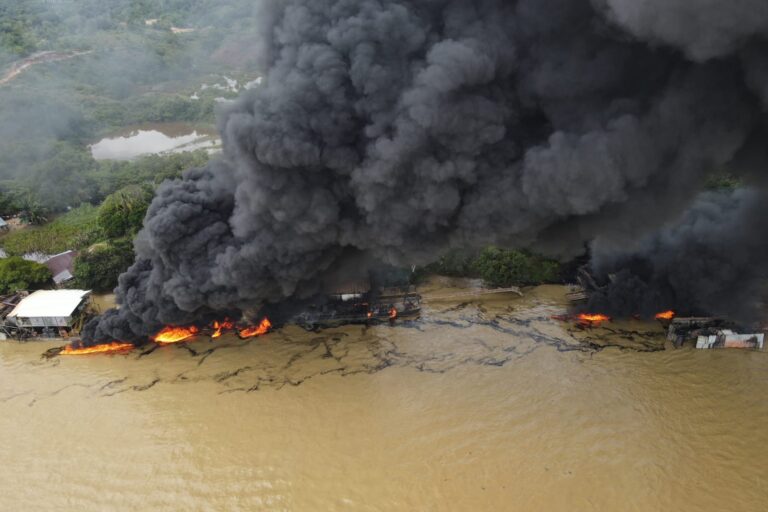
To speed up the process, governments can prioritize legal reforms that recognize artisanal and small-scale mining and facilitate shared infrastructure. Indeed, initiatives such as these are already being pursued in many countries across the Amazon. Key enablers for responsible gold formalization include legal reforms that simplify licensing and clarify land rights; de-risking facilities through blended finance and public guarantees; transparent certification and blockchain traceability; and community-led models that prevent elite capture and empower miners.
Technology also plays a role in scaling artisanal and small-scale gold mining regulation. Innovations in online mobile processing, blockchain traceability and satellite monitoring can support cleaner, more predictable and transparent value chains. In Brazil, where around half of all gold production is associated with illegality, some startups such as Certimine are using certification platforms to check more than 120 operations across the country. Yet these tools also require investment in capacity and trust, which are scarce commodities in remote mining zones too often riddled with crime and illegality.
If responsibly developed, gold processing plants offer a rare win-win: improved environmental performance, safer livelihoods, and gradual transformation of one of the world’s most intractable informal sectors. Left unchecked, however, artisanal gold mining will continue to fuel the twin crises of ecological degradation and criminal economies.
The COP30 climate summit, which will be hosted in Brazil’s Amazon, offers a strategic opportunity to put the gold mining issue squarely on the international agenda. Gold’s glitter will not fade, but if mined without reform, it will continue costing the world its forests, its rivers, and its security.
Robert Muggah is an expert on security, cities, climate action and digital transformation. He is chief innovation officer for the Rio de Janeiro-based Igarapé Institute, an independent “think and do tank” that he co-founded, which is focused on the areas of public, climate and digital security and their consequences for democracy.
Related audio from Mongabay’s podcast: A community in the cloud forests of Ecuador has been defending its nature against a proposed copper mine successfully for 30 years, here’s how:
See related coverage:
After crackdown on illegal miners, Indigenous Munduruku still grapple with health aftermath
Cross-border operation cracks down on environmental crimes in the Amazon
New list of primates in peril aims to focus attention and inspire action
The world needs a new UN protocol to fight environmental crime (commentary)
Citation:
Aldous, A. R., Tear, T., & Fernandez, L. E. (2024). The global challenge of reducing mercury contamination from artisanal and small-scale gold mining (ASGM): Evaluating solutions using generic theories of change. Ecotoxicology, 33(4-5), 506-517. doi:10.1007/s10646-024-02741-3










